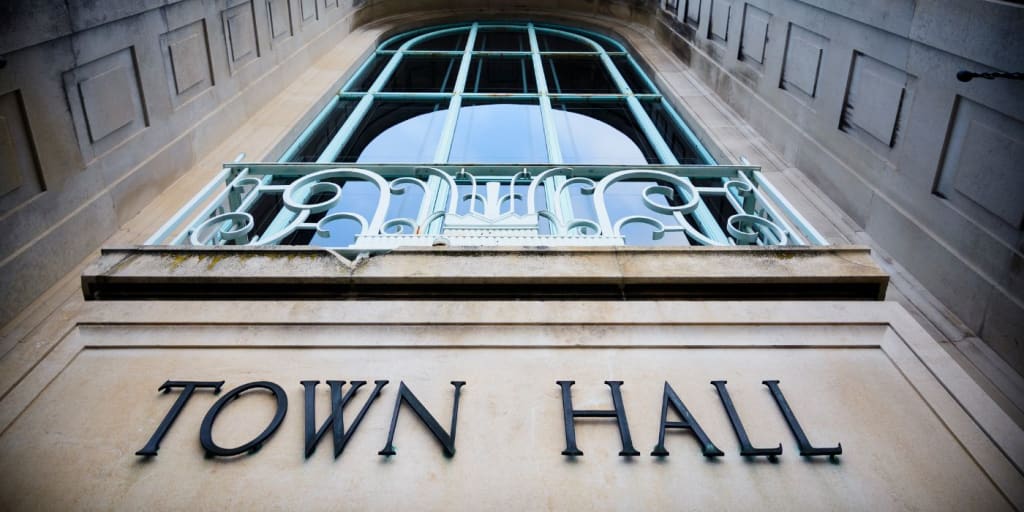
The Labour Party’s first budget in 14 years was announced 30th October, introducing big changes to UK finance, taxation and spending rules, including at the local government level. Whether this addresses financial challenges faced by local authorities is still an open question. Yet, the message is clear: citizen engagement is key to creating inclusive, fiscally responsible local budgets.
On 30th October 2024, the hotly-awaited UK Autumn Budget was delivered to Parliament by Chancellor Rachel Reeves. This document gives us a much clearer picture of Labour’s fiscal plan for the next year — and by extension, is indicative of their economic strategy for the rest of this parliamentary term.
(Hint: austerity is out, big government investment is in, and higher taxes are how we’ll get there.)
Alongside £1.3 billion in extra funding per year, local authorities will also be beneficiary of several new schemes and local tax streams.
This article is an Autumn budget 2024 summary, so you don’t have to read the whole thing. We’ll also loop you in on the changes to local government funding, and explain why we think participatory budgeting will be even more important in the years ahead.
4 Key Takeaways from the UK Budget 2024

At a glance, the headline change in this budget is the raising of £40 billion in extra taxation per year — which Rachel Reeves claims will go some way to plugging the so-called “£22 billion black hole” in the public finances.
The remainder of the tax hike is intended to fund public services (including at the local government level) and attract greater investment from the private sector. For instance, the National Wealth Fund will set aside £7.3 billion for large-scale infrastructure projects, and aims to bring in £3 of private capital for every £1 of public money.
4. Employers Will Bear the Brunt of Tax Increases

Much of the tax rise in the UK Budget 2024 will be paid for by employers — echoing Labour’s promise not to put higher taxes on ‘working people’, such as raising the income tax threshold or VAT.
From the start of the next fiscal year, Employers National Insurance contributions will increase from 13.8% to 15%, with the earnings threshold reduced from £9,100 to £5,000. The Government hopes this will raise £25 billion for the treasury per year, although it has drawn some concern from business leaders, especially after years of inflation, supply chain issues, and recent increases to the national minimum wage. As expected, Labour will also be applying the standard 20% VAT rate to private school fees from next year.
The Confederation of British Industry is concerned that these taxes will be passed on as increased costs for everyone else — which could be felt in the form of staff lay-offs, hiring freezes, or lower pay. This could cause concern for some local government leaders, particularly if their area has lots of large employers or private schools that will pay more under this scheme.
3. But Small Businesses Will Have Some Relief

To alleviate some of these cost pressures on independent traders and small businesses, Labour will be increasing the Employment Allowance from £5,000 to £10,500 per year. They’ll also be extending the Retail, Hospitality, and Leisure business relief scheme until 2026, albeit at a lower rate of 40% from the next fiscal year.
Once this scheme ends, business rates will return to pre-covid levels, which in theory could bring in more income for local authorities. That’s assuming the tax bite doesn’t result in shops closing their doors, which could have a double-whammy effect of job losses and less cash in the local economy. Labour hopes their investments will grow the economy enough that the tax rises pay for themselves in the long run, but only time will tell.
2. Inheritance, Capital Gains, and Non-Dom Tax Have Been Reworked

The remainder of the tax changes are mostly related to Capital Gains Tax (CGT) and inheritance tax. For instance, the CGT rate will increase from 10% to 20% and 18% to 24% respectively across its two bands — which Labour says will bring them closer in line with income taxation.
Inheritance tax will be a bigger prize, with it now applying to “most unused pension funds and death benefits” from 2027, meaning less pension tax relief. This shouldn’t affect local government too much, given that it also comes with a more lenient relief scheme for the agricultural and business sector.
In line with their manifesto promise, Labour has scrapped the non-dom tax status in the hopes it will raise £2.7 billion per year. The counter-argument is that it could push some wealthy individuals to leave the UK, potentially affecting income streams for local authorities in London and major cities.
1. Private and Public Sector Workers Will Enjoy Higher Wages

After years of historically high inflation, Labour is keen to give something back to millions of everyday workers in the UK. From April 2025, the National Living Wage will increase by 6.7% to £12.21 per hour, and 18 to 20-year-olds will see a huge 16.3% boost to their age band’s earnings.
This follows the announcement back in July that public sector employees will receive pay rises amounting to £9.4 billion pounds, including 22.3% over two years for junior doctors. It’s hoped this will reduce hiring pressures on the NHS, giving the Government wiggle room to pursue a more preventative approach to public service healthcare. Finally, 60,000 working carers will now be able to receive support under the uplifted Carer’s Allowance.
Changes to Local Government Budgets under Labour’s Autumn Budget

Back in September, the Local Government Association (LGA) warned that councils face a £6.2 billion funding shortfall over the next two financial years — with 1 in 5 facing an imminent risk of bankruptcy. These budgetary pressures have largely been driven by rising costs in adult and children’s social care, with Labour unveiling new sources of government spending to keep councils afloat.
More Funding from Central Government

Firstly, the UK Budget 2024 sets aside £1.3 billion extra in grant funding for local authorities, including at least £600 million for social care services. The Household Support Fund will receive an additional £1 billion extension, helping councils provide welfare to vulnerable people such as the homeless.
In response to cost pressures in the special educational needs and disabilities (SEND) sector, the Government will provide another £1 billion in funding — which will go some way to alleviating the social care crisis.Plus, the Government will be investing more in early years support, with a new Kinship Allowance for carers that should reduce some of the burden on public services.
Other reforms include funding for Bus Service Improvement Plans, as part of Labour’s plan to empower councils to take control of their bus services. A new pot of £500 million will also be set aside for pothole repairs. Local authorities might want to consider running a transport consultation to better understand what people want to see from these schemes, such as pinpointing roads in need of repair on a geospatial map, or sharing their views about broader policy.
The Labour manifesto also spoke a lot about devolution and handing more power to Combined Authorities. The Autumn Budget represents the first step towards this system, with Greater Manchester and the West Midlands Combined Authority being the first to receive integrated settlements from next year — a move Reeves says will give them “meaningful control of the funding for their local areas”.
From 2026, all councils will be able to claim multi-year settlements for grant payments, which should make the bidding process more competitive and forward-thinking. We’ll keep you updated when the full policy statement is released in the coming year.
More Funding from Local Sources

Labour wants to hand local authorities the reins in how they raise and spend money themselves. Under the previous government, some areas were given permission to raise council taxes higher than the 5% cap, with Birmingham City Council given special dispensation to increase them by 21% over the next 2 years.
This model was met with some criticism by the LGA, who argued that council tax raises different amounts of money in different parts of the country, unrelated to need. Nevertheless, local authorities have benefitted from our Budget Simulator to calculate how price rises could be offset by council tax vs other forms of savings.
Now, the Autumn Budget talks of a trial scheme for Combined Authorities to retain more of the business rates collected at the local level. From 2025, the West of England, Cornwall, and Liverpool regions will be able to keep 100% of local business rates, with the figure at 67% in London.
Even more interesting, is that the Liverpool City Region is spearheading a move to take control of the Urban Development Fund and spatial planning responsibilities in their area. This may well be the model that Labour pursues for regional planning over the next 5 years.
Together, the increases in grant funding, council tax flexibilities, and locally-retained business rates are expected to provide local government with a real-terms increase in core spending power of 3.2% next year. For more information, be sure to read the LGA guide to the UK Budget 2024 for local authorities.
How Citizen Engagement is Helping Local Budgets Go Further…

As far as budgets go, this one is a pretty big deal for local government. Local authorities will enjoy a big boost to their yearly grants, new sources of income at the regional level, and multi-year funding settlements on the horizon.
From 2026, the multi-year funding scheme offers councils a fantastic opportunity to create a more efficient local budget — one that doesn’t rely so much on wasteful bidding or private consultancy fees. We encourage councils to go one step further and invite local residents to co-create a participatory budgeting process.
You know the saying “with great power comes great responsibility”, and this is especially true for public authorities who are legally bound to achieve Best Value in service delivery. Right now, the statutory duty is simply to consult the public on how their money will be spent; a strategy quite low down the rungs of Arnstein’s ladder of citizen participation. Many people still feel cut-off from local government processes, which contributes to consultation fatigue and loss of faith in public bodies.
It doesn’t have to be this way. Rather than offering tokenistic concessions, we want to see local government empowering citizens to have a greater voice in their local budget. In recent years, more and more councils are adopting a Citizen’s Assembly model for co-creating local fiscal plans. This means services and taxes are more inclusive to local people’s needs, and for a much lower cost than hiring private consultants to do essentially the same thing.
—————
Digital consultation platforms like Citizen Space help hundreds of councils collect feedback from their greatest resource: people. It makes tough budgetary decisions a more accessible, more informative, and more engaging process for all involved.
Book a free demo and we’ll show you how it works in action.